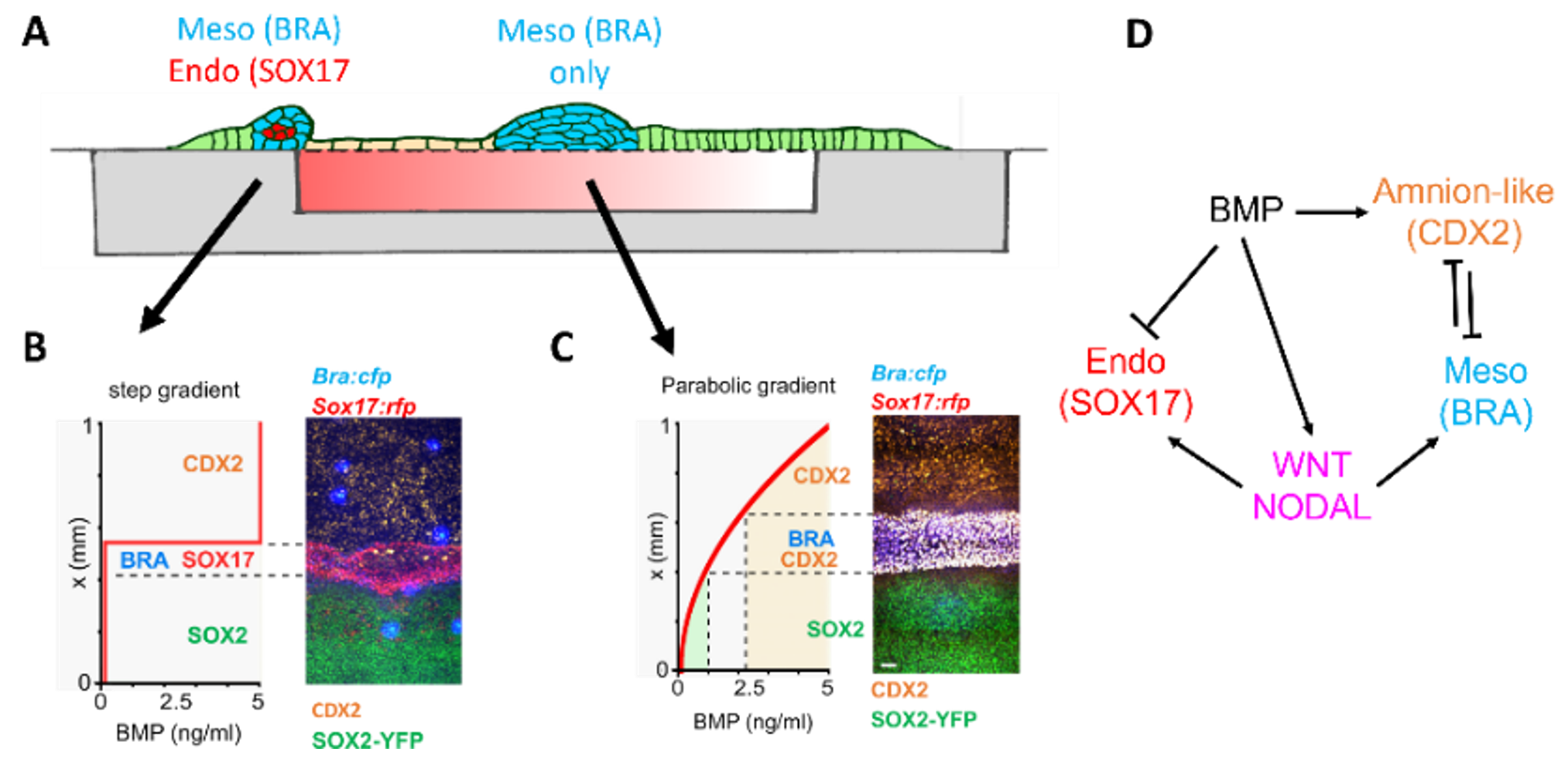The culture and differentiation of different types of stem cells is developing at a rapid pace. The aim is to succeed and create organs in vitro (“organoids”). The goals are both fundamental and therapeutic. On the one hand, it is a new way (the only one for human) to precisely understand how cells differentiate and give rise to organs. On the other hand, it should help to assess the effect of molecular dysfunction and to find how to cure, as well as to produce functioning organs in vitro.
In this endeavor, developing precisely controlled and modifiable experimental conditions and understanding their effect is very important. This is the goal of this internship with the study of the effect of well-defined gradient of signalling molecules (morphogen) on stem cells and quantitative modelling of the results.
Morphogens are molecules able to control cell differentiation. During embryonic development morphogen gradients are used repeatedly and are ubiquitous to define the spatial organization of developing tissues. How the tissue patterning depends on morphogens their interactions and their gradient properties (maximum concentration, shape -steepness, linear vs parabolic- or temporal evolution) remains an outstanding question.
Answering this question in a quantitative manner requires at the same time to record signaling activities, cell fates and movement with single cell resolution but also to be able to apply well defined perturbations to the system, which is usually not possible in live embryos, especially for human. Thus, to address these issues in a quantitative manner, we have designed a microfluidic chip to cultivate human Embryonic Stem Cells (hESC) for several days under stimulation of fully controllable gradients of morphogens.
Our preliminary results show that in a static parabolic morphogen gradient, some cell types (amnion-like cells, mesoderm) are generated in a concentration dependent manner, in agreement with a classical (“French flag”) model, but that some other are not. Our observations suggest that patterning of the embryo results from the interplay between the spatial profile of BMP, the diffusion properties of other molecules (WNT, NODAL) and the dynamics of signaling (fig1D).
The goal of the internship is to further analyze this system to better understand it. It could be purely experimental (supervision B. Sorre) or theoretical (supervision V. Hakim) or both. The experimental part would be to characterize the dynamics of BMP WNT and NODAL signaling pathways during patterning using recently developed live cell reporters and to investigate how the patterning evolves when other morphogens are added. You will learn: making and operating advanced microfluidic chips, culture and characterization of human embryonic stem cells, confocal microscopy and image analysis.
The goal of the theoretical part is to define and constrain a dynamical model of tissue patterning that would allow to test our hypotheses about the origin of the spatial organization of cell identities observed in the experiments. It entails describing various interactions in mathematical terms as well as simulating and analyzing the corresponding (partial differential) equations
